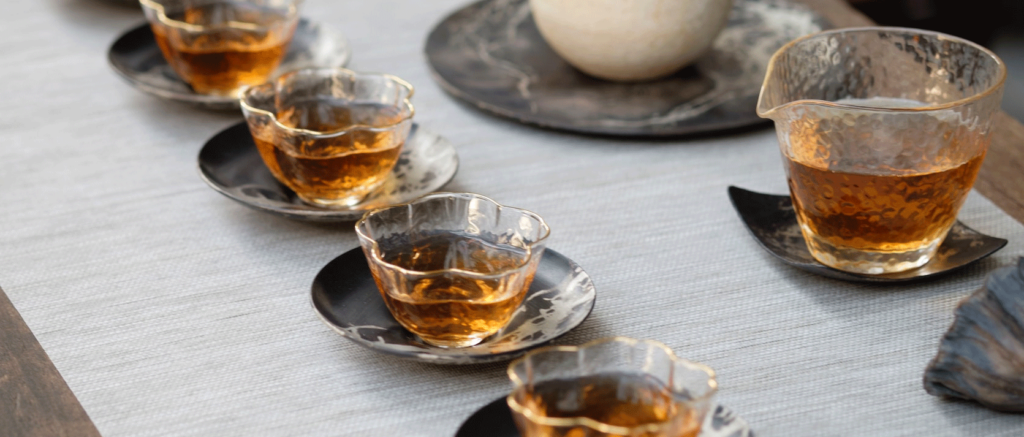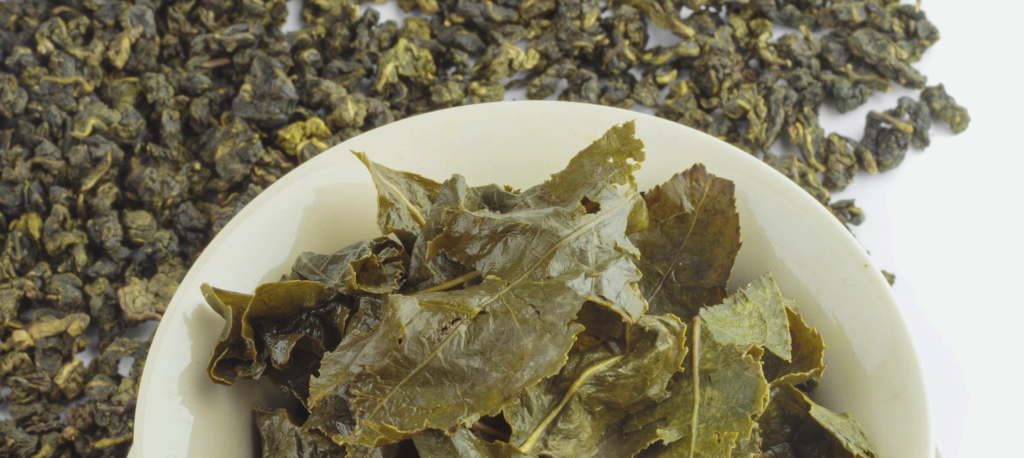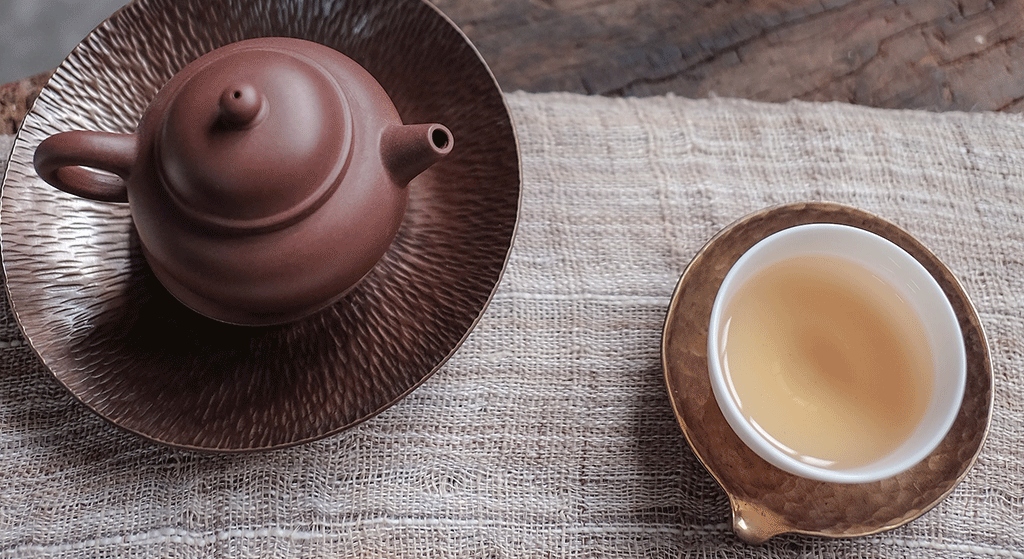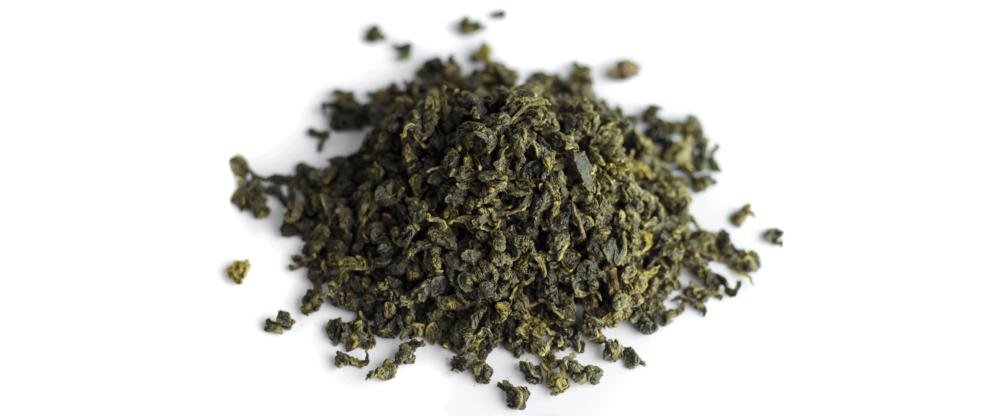Table of Contents
Introduction
Step into the intriguing world of Oolong tea, a beverage that strikes a remarkable balance between the freshness of green tea and the depth of black tea. As we embark on this journey, we’ll delve into the origins, rich history, cultural significance, and modern adaptations of Oolong tea. With every sip, we’ll unravel the mysteries of this exceptional elixir, from its ancient beginnings in the Far East to its lasting influence on global tea culture and well-being.
Oolong tea, celebrated for its diverse flavors and exquisite aroma, is more than just a drink; it’s a testament to tradition, mindfulness, and a deep connection to nature. Join us as we venture into the tea gardens of China and Taiwan, where Oolong tea leaves are meticulously crafted to create the perfect cup. Our exploration extends beyond the teapot to the culinary world, where Oolong’s versatile applications shine, and to the wellness and beauty industries, where it’s renowned for its health benefits and rejuvenating properties.
Sip, savor, and immerse yourself in the captivating world of Oolong tea.
Origins and Traditions
Oolong tea has a history as intricate and nuanced as its flavor. Let’s delve into the story of Oolong tea, from its ancient origins to its enduring legacy.
Ancient Origins in China
The origins of Oolong tea can be traced back to the misty mountains of China, where tea cultivation and consumption date back thousands of years. Legend has it that Oolong tea was discovered by accident when a tea farmer, distracted by a deer, let his tea leaves oxidize more than intended. The result was a partially fermented tea with a distinct flavor profile, and thus, Oolong tea was born.
Distinctive Oxidation Levels
What sets Oolong tea apart is its unique oxidation process. While green tea is unoxidized and black tea is fully oxidized, Oolong tea falls somewhere in between. It is partially oxidized, which means the leaves are allowed to wither and oxidize to varying degrees before being fixed, rolled, and dried. This intermediate level of oxidation is the key to Oolong tea’s wide spectrum of flavors and aromas.
Fujian Province: The Birthplace of Oolong
Fujian, a province in southeastern China, is often regarded as the birthplace of Oolong tea. The region’s favorable climate, with its misty mountains and rocky terrain, creates an ideal environment for growing tea. Teas like Tie Guan Yin and Da Hong Pao originated in this region and are celebrated for their exquisite flavors.
Taiwan’s Oolong Legacy
Oolong tea found its way to Taiwan in the 18th century when Chinese immigrants brought tea plants and knowledge of Oolong tea production. The island’s unique climate and terrain led to the development of distinctive Oolong varieties such as Dong Ding and Alishan. Taiwan is now renowned for its high-mountain Oolong teas, characterized by their floral notes and smooth finish.
Oolong Tea’s Renaissance
While Oolong tea has a rich history, it wasn’t until the Ming and Qing dynasties that it gained significant popularity. During this time, tea artisans honed their craft, creating a multitude of Oolong varieties with distinct tastes, aromas, and appearances. The famed Wuyi Mountains in Fujian became the epicenter of Oolong tea production, with teas like Da Hong Pao (Big Red Robe) attaining legendary status.
Tea Artistry and Ceremonies
In China, the appreciation of Oolong tea is intertwined with the art of tea brewing. Elaborate tea ceremonies have been developed to savor the rich flavors and fragrances of Oolong teas. The Gongfu Cha (Kung Fu Tea) ceremony, in particular, is revered for its precise rituals, from the warming of teapots to the methodical pouring of tea, emphasizing the beauty and taste of Oolong tea.
Taiwanese Tea Culture
In Taiwan, Oolong tea is an integral part of daily life. Traditional tea houses, where patrons can savor an array of Oolong teas, are scattered throughout the island. Taiwan’s tea culture emphasizes the Gongfu brewing method, resulting in a tea experience that highlights the character of each brew.
Types and Characteristics

Oolong tea, sometimes spelled as “Wu Long” tea, is a traditional Chinese tea that falls between the categories of green and black tea in terms of oxidation. It is renowned for its diverse flavor profile and unique processing methods.
Here’s some characteristics of Oolong tea:
Appearance: Oolong tea leaves vary widely in appearance, depending on the specific type and processing methods. They can range from tightly rolled, dark green leaves to loosely twisted or open, revealing shades of green to brown. Oolong tea can also be found in a variety of leaf styles, including both whole leaves and broken leaves.
Aroma: The aroma of Oolong tea is one of its most distinctive features. It can be floral, fruity, earthy, woody, or even nutty, depending on the tea’s type and origin. The aroma is often described as fragrant, with a complex bouquet that evolves with each infusion.
Flavor: Oolong tea offers a wide spectrum of flavors, making it one of the most diverse tea categories. The flavor profiles can vary from light and floral with a hint of sweetness to dark and roasted with more pronounced mineral or earthy notes. Some Oolong teas have a creamy, buttery texture, while others are more robust and astringent. The degree of oxidation and the tea’s terroir contribute to its unique taste.
Oxidation Level: The key characteristic of Oolong tea is its partial oxidation. While green tea is unoxidized, and black tea is fully oxidized, Oolong tea falls somewhere in between, typically ranging from about 10% to 70% oxidation. This partial oxidation allows Oolong teas to offer a range of flavor profiles, making them highly versatile.
Caffeine Content: Oolong tea contains caffeine, but the caffeine levels can vary depending on the specific tea and how it’s brewed. On average, it contains less caffeine than black tea but more than green tea. This moderate caffeine content provides a gentle energy boost without the intense jolt associated with coffee.
Oolong tea is celebrated for its versatility, offering a wide array of flavors and aromas to explore. Its complex and multifaceted nature makes it a favorite among tea connoisseurs and a compelling choice for those seeking a more sophisticated tea-drinking experience. Whether you prefer a light and floral Oolong or a deep and roasted variety, there’s an Oolong tea to suit every palate.
Oolong tea varieties
Oolong tea is a category that encompasses a wide range of flavors and aromas, from light and floral to dark and roasted. Here are some notable Oolong tea varieties:
| Type | Origin | Characteristics |
| Tie Guan Yin | China | Its taste can be delightfully floral with a pronounced lilac and orchid sweetness. There’s also a subtle creaminess, reminiscent of butter, and an undertone of mineral or earthy notes. As the tea unfolds through multiple infusions, the flavor evolves, revealing different facets with each steep. |
| Da Hong Pao | China | It is characterized by a toasty, roasted quality with a sweet undertone. The roasted chestnut and woodsy notes are prominent, but they are balanced by subtle floral and fruity hints. As the tea unfurls through multiple infusions, the flavor deepens, offering variations of roasted and fruity notes. |
| Dong Ding | Taiwan | It offers a mix of roasted, nutty, and sweet notes. The roasted quality is prominent, reminiscent of roasted chestnuts or almonds, but there are also floral undertones that add a layer of sophistication. As the tea leaves unfurl through multiple infusions, the flavor deepens, offering an evolving and nuanced taste. |
| Ali Shan | Taiwan | Its taste is characterized by a harmonious blend of floral, fruity, and creamy notes. The floral aspect is akin to orchids and lilacs, while the fruity undertones may include hints of peaches and apricots. Ali Shan’s creamy texture provides a smooth and well-rounded drinking experience. |
| Oriental Beauty | Taiwan | It offers a harmonious blend of fruity, floral, and honey-like notes. The fruitiness is often likened to ripe stone fruits, such as peaches and apricots. The floral elements include undertones of lilac and orchid. The finish is graced with a sweet, honeyed character that lingers on the palate. |
| Phoenix Dan Cong | China | The tea is celebrated for its distinct and layered taste. It often boasts an orchid-like floral sweetness with underlying fruity notes, coupled with a pleasant minerality and occasional hints of roasted nuts or spices. |
| Pouchong | Taiwan | Pouchong is celebrated for its gentle, nuanced, and slightly sweet flavor. Its taste profile is often described as light, floral, and herbaceous. While it retains the characteristic oolong qualities, it leans toward the greener end of the flavor spectrum, avoiding the deeper, roasted notes found in darker oolong teas. The taste is subtle and refreshing, making it a popular choice for those who appreciate milder teas. |
| Shui Xian | China | It offers a full-bodied, robust taste with a spectrum of flavors. Depending on the specific type and roast level of Shui Xian, you may encounter notes of caramel, honey, dark chocolate, ripe plums, and a subtle roasted undertone. The flavor evolves with each infusion, offering a rich and layered drinking experience. |
Brewing the Perfect Oolong

Brewing Oolong tea is an art in itself, as the leaves’ partial oxidation requires precise methods to unlock their full potential. Here’s a guide to brewing Oolong tea:
Ingredients and Equipment:
- Oolong tea leaves: Select a high-quality Oolong tea that suits your taste preferences.
- Fresh, cold water: Ideally, use spring water or filtered water for the best flavor.
- Gaiwan, Yixing teapot, or teacup with a lid: These are suitable vessels for brewing Oolong tea.
- Timer: Use a kitchen timer or smartphone to keep track of steeping time.
Steps for Brewing Oolong Tea:
- Water Temperature: Heat the water to the appropriate temperature for the specific Oolong tea you’re brewing. Generally, water temperatures for Oolong teas range from 185°F to 212°F (85°C to 100°C). Darker Oolongs may require higher temperatures, while lighter ones are best brewed at lower temperatures.
- Preheat the Teapot or Teacup: Pour a small amount of hot water into the teapot or teacup to warm it. Swirl the water around and then discard it.
- Measure Tea Leaves: Use the recommended amount of tea leaves for the specific Oolong tea you’re brewing. Typically, it’s about 1 to 1.5 teaspoons of tea leaves per 8 ounces (225grams) of water.
- Add Tea Leaves: Place the measured tea leaves into your teapot or teacup.
- Pour the Water: Slowly pour the heated water over the tea leaves. Pour the water evenly to ensure that all the leaves are saturated.
- Steep the Tea: The steeping time for Oolong tea varies depending on the tea type, leaf style, and personal taste. Lighter Oolongs may steep for 1-3 minutes, while darker ones may require 3-5 minutes. The key is to experiment to find your ideal steeping time. Oolong teas can often be re-steeped multiple times, with each infusion revealing different nuances of flavor.
- Serve: Once the tea has steeped for the appropriate time, remove the tea leaves from the teapot or strain the tea if necessary.
- Enjoy: Sip your Oolong tea slowly and savor the diverse flavors and aromas. Oolong teas are often enjoyed plain, without milk or sugar, to appreciate their nuanced taste.
Additional Tips:
- Store your Oolong tea leaves in an airtight container away from light, air, and moisture to maintain freshness.
- Experiment with different steeping times and temperatures to discover the flavor nuances of each Oolong variety.
- Embrace the practice of multiple infusions, as each steeping unveils distinct flavors in Oolong tea.
Health and Well-Being
Oolong tea, like its green and black counterparts, offers a range of potential health benefits:
Weight Management: Oolong tea contains polyphenols that can increase metabolism and help in weight management by enhancing fat oxidation.
Heart Health: Regular consumption of Oolong tea may support heart health by reducing cholesterol levels and promoting overall cardiovascular well-being.
Antioxidants: Oolong tea is rich in antioxidants, which help combat oxidative stress and reduce the risk of chronic diseases.
Digestive Aid: Oolong tea can aid digestion and alleviate digestive discomfort, making it a helpful beverage after meals.
Mental Alertness: The caffeine in Oolong tea, combined with its theanine content, can improve mental alertness and cognitive function.
Skin Health: Oolong tea’s antioxidants may contribute to healthier skin by reducing oxidative damage and signs of aging.
Bone Health: Some studies suggest that Oolong tea may promote bone density and strength due to its minerals and antioxidants.
While Oolong tea offers these potential health benefits, it’s essential to remember that its effects can vary from person to person and are often contingent on the quality of the tea and individual health conditions. As with any health regimen, a balanced diet and a healthy lifestyle are key to overall well-being.
Cultural Significance of Oolong Tea

Oolong tea has a distinct cultural significance that reflects the traditions and values of both China and Taiwan:
Chinese Tea Culture
In China, Oolong tea is celebrated for its variety and depth of flavor. The Gongfu Cha tea ceremony, practiced in many parts of China, emphasizes mindfulness, precision, and respect for the tea. Oolong teas often play a prominent role in this artful ceremony, showcasing their intricate taste profiles.
Taiwanese Tea Culture
In Taiwan, Oolong tea has become a symbol of local pride and cultural heritage. The Taiwanese practice of Gongfu tea brewing, similar to China’s, focuses on preserving the unique characteristics of each Oolong tea. The commitment to quality and authenticity in Taiwanese Oolong production has solidified its reputation as some of the world’s finest teas.
Tribal Traditions
Taiwan’s aboriginal tribes have their tea culture, reflecting the harmony between people and nature. The indigenous Bunun people, for instance, have a tea culture deeply rooted in their history and customs.
Oolong in Modern Times
Modern Culinary Applications
Oolong tea’s diverse flavor profile has made it a versatile ingredient in modern cuisine. It is incorporated into various culinary creations, from savory dishes to desserts and beverages. Here are some of the ways Oolong tea has been embraced in contemporary cooking:
Tea-Infused Dishes: Oolong tea infusions are used to impart subtle tea flavors into sauces, marinades, and soups, adding depth to the overall dish.
Tea-Infused Desserts: Oolong tea is used in a wide range of desserts, including ice creams, puddings, and chocolates, to provide an elegant tea essence.
Tea-Smoked Foods: In traditional and contemporary Chinese cuisine, Oolong tea leaves are used for smoking dishes, such as tea-smoked duck, infusing them with a delightful smoky aroma.
Tea-Flavored Baking: Oolong tea, with its nuanced flavors, is integrated into various baked goods, such as tea-infused cookies, cakes, and pastries, adding layers of complexity.
Tea Mixology: Mixologists incorporate Oolong tea into cocktails and mocktails, using its rich flavors and aromas to create innovative and refreshing beverages.
Oolong tea’s adaptability in the culinary world is a testament to its depth and versatility. Its ability to complement both sweet and savory dishes has made it a sought-after ingredient for chefs and culinary enthusiasts.
Beauty and Wellness Trends
Oolong tea is not just valued for its culinary applications; it has also made a mark in the wellness and beauty industries:
Tea Extracts: The antioxidants in Oolong tea have made it a popular ingredient in wellness supplements, catering to those looking to harness the potential health benefits of the tea.
Skincare: Oolong tea’s antioxidant and anti-inflammatory properties have led to its inclusion in various skincare products. These products aim to protect the skin from UV damage, reduce signs of aging, and address skin conditions.
Aromatherapy: The calming aroma of Oolong tea is employed in essential oils and candles for relaxation and mental clarity in the realm of aromatherapy.
Conclusion
In conclusion, oolong tea stands as a testament to the artistry and diversity of the world of tea. With its unique processing methods, intricate flavors, and rich cultural heritage, oolong tea has carved a special place in the hearts of tea enthusiasts. From the lightly oxidized, floral profiles of Tie Guan Yin to the dark, roasted depths of Shui Xian, oolong teas offer an array of experiences that cater to a broad spectrum of tastes.
The journey into the realm of oolong tea takes us from the rolling hills of Taiwan to the craggy landscapes of the Wuyi Mountains in China. It weaves through centuries of tradition and innovation, illustrating the meticulous care bestowed upon each tea leaf. Oolong teas reflect the profound connection between nature and human craftsmanship, offering a bridge to the natural world and an opportunity for mindfulness.
As you sip your favorite oolong tea, whether it’s the exquisite Da Hong Pao or the nuanced Tie Guan Yin, you become part of a legacy that stretches back through generations. The story of oolong tea is still unfolding, as contemporary trends in culinary arts, wellness, and beyond continue to incorporate this versatile beverage.
So, raise your teacup, embrace the artistry, and savor the journey. Oolong tea is more than a drink; it’s a timeless exploration of flavors, a celebration of culture, and a companion for life’s moments, both big and small. With oolong tea, every cup offers a fresh opportunity to discover and appreciate the incredible world of tea.

